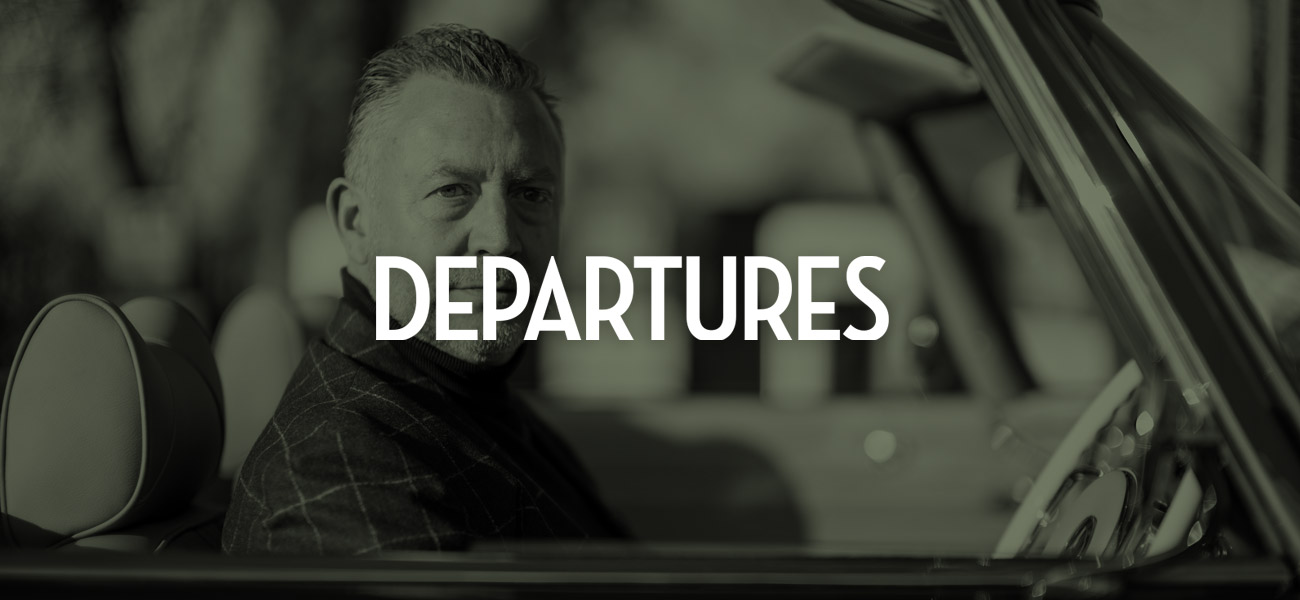Classic cars are iconic pieces of motoring history, but, unfortunately, they are also increasingly at risk of becoming obsolete. Due to changing laws about petroleum and changing consumer attitudes, they might be resigned to the garage in the future. However, Justin Lunny and ionic cars are determined to change such a grim prediction. We spoke to Justin about the inspiration behind the company, some of the challenges involved in “electrifying” classic cars and what’s next for his firm.
What was the inspiration behind ionic cars?
I have always loved cars and driving, but having young children, I believe air quality, and emissions generally, are now at unacceptable levels and need to be drastically reduced. I therefore want to give car lovers the opportunity to own and drive their dream cars without the downsides of an internal combustion engine. At ionic, we focus on delivering cars that are virtually indistinguishable from their petrol-powered counterparts. We also believe it’s important to ensure that the cars are not damaged during the process – so we ensure that (whilst unlikely) the process is reversible. Many of our customers will have multiple cars to drive, buying an ionic car gives them the ability to demonstrate their passion for cars whilst also being conscious of the environment.
How did it get started?
Our ‘launch cars’ are Mercedes-Benz SL ‘Pagoda’ and Porsche 911 Targa. I have been researching and working on the ionic concept for over three years. I was impressed by the electric Jaguar e-Type used for Price Harry and Meghan Markle’s wedding at Windsor Castle (I lived in Windsor, including right opposite the Castle, for almost 15 years and know the area well), and it sparked my interest in an electric ‘classic’. I searched extensively for companies that could sell me a high-quality, converted car, and none existed. The Pagoda is one of the most glamourous Mercedes-Benz cars ever produced and appeals to male and female drivers, so it seemed a great first car to focus on.
What’s your favourite historic car? If you could upgrade one car what would it be?
I have always loved front-engine Ferrari’s, and one with a V12 and no roof is about as special as a car can be. My favourite historic car is [the] Ferrari 250 California Spyder SWB. However, I also believe a huge part of the value of a Ferrari is largely in its engine. We are therefore looking at a number of very high value vehicles that could be delivered to clients either with their original engine re-packaged (in a glass box for their home – thereby retaining ‘matching numbers’) or indeed high-end ‘homage’ versions, so that they can drive the ionic version, and keep their original in their garage.
What is your car history?
I’ve owned a number of cars from a Renault 5 Gordini, through Lancia’s, BMW’s, Porsche, Bentley and Ferrari. I’m lucky enough to have access to a few cars, I’m about to take delivery of my new daily driver (a Porsche Taycan Turbo S) and obviously drive a couple of ionic cars, and yes, a V12 Ferrari.
What’s your dream car?
A 250 SWB California Spyder in the garage, and an ionic version on the drive!
Are there any technical challenges with upcycling/greenifying an old sports car?
Yes! Given our focus is on quality, and not damaging the original essence of the car, it is so important to develop specific electric powertrains for each ionic model we make. This process involves painstaking work [to] ensure the car will drive as it should – from [safeguarding] weight and weight distribution to remain as close to original, to 3-D scanning, CAD engineering & design, and producing touch points on the car (such as trim, dials and gauges showing EV data) that look like they have always been there.
What are your thoughts on the Tesla-powered car conversions that people are “hot rodding”?
The home-tuner market for cars has always been significant and is now increasingly looking to Tesla (& other) parts in conversions. In addition Tesla motors, and batteries, are some of the best in the industry in terms of performance. There is now a large ‘aftermarket’ in salvaged Tesla parts (as Tesla don’t sell new driveline parts to consumers). However ionic cars would always caution against using used batteries (Tesla or otherwise) due to any potential damage they may have suffered before being salvaged; safety is always of paramount importance.
What’s next for ionic cars?
We are gearing up for delivery of our first customers’ cars in late 2020 and also working on a number of exciting new ionic models. We also see demand for ionic cars in a number of parts of the world so are developing dealer relationships to meet demand. I am looking forward to meeting (virtually or otherwise!) more and more ionic clients to specify their cars and make their electric dreams a reality.
Source : Departures International Click Here

